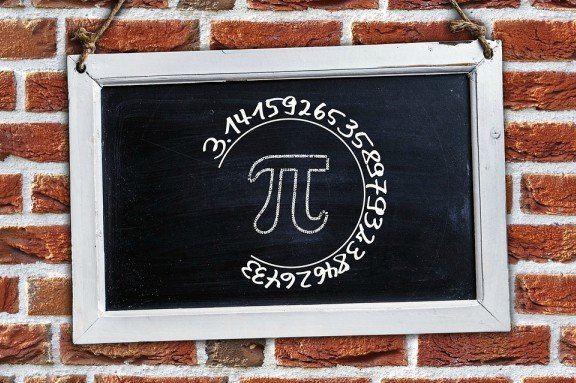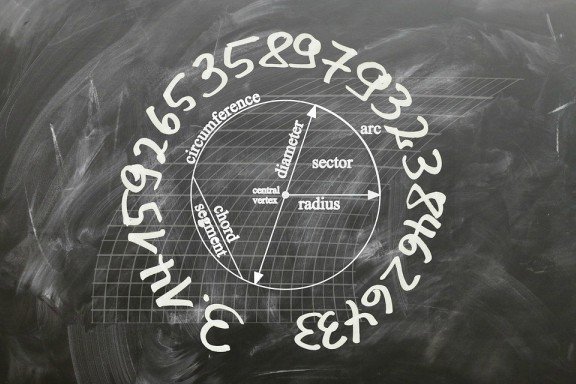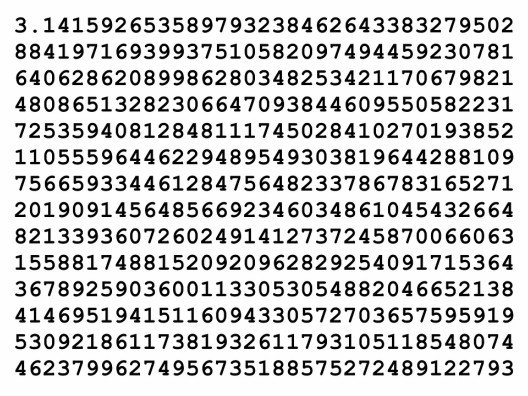On March 14th people all over the world "celebrate" π day, but since there are still people who are not familiar with what π actually is I will take this opportunity and make an interesting post with some fun facts about it as well as provide some educational information. Before I started writing this post I found out that Steven Hawking died and that made this day less fun for me than I would have wanted it. That event will be the third one that will mark this date; π day, Einsteins birthday and Hawkins death date. It does sound sorrow, but things do come in threes :(

What is π?
π is defined as the circumference divided by the diameter of a circle but you can also draw π. If you take your callipers and draw a circle that has a diameter of 1 (radius of 0.5), the circumference is then π.

It has been calculated that π has over two quadrillion decimal places with no pattern in the appearance of digits, and since there are no two numbers which ratio will result in π, we call it an irrational number. Irrational numbers are those who cannot be written as fractions, for example, √2, PI, e, √3, √99 etc.
FUN FACT:
"Followers of Pythagoras could not accept the existence of irrational numbers, and it is said that Hippasus was drowned at sea as a punishment from the gods for discovering irrational numbers when trying to write the square root of 2 as a fraction." Source: mathisfun.com
WHO discovered π and when?
This is actually a hard question, we can not pinpoint the exact date of π discovery. Since 2550 BC humans have been aware of the constant ratio between the circumference of a circle and its diameter. The ratio of the perimeter of the Great Pyramid at Giza (1760 cubits) and its height (280 cubits) is approximately 2 times π. If you are wondering what cubit is, don't beat yourself up. It is about 18 inches long and it was measured by a person's forearm length. Different people, different forearms? I know, I said "approximately" didn't I? :)

Archimedes of Syracuse (287-212 BC) is the one who is considered to be the first to calculate an accurate estimation of the value of π by using 96-sided polygons. He came up with a value between 3.1408 and 3.14285. Zhu Chongzhi (AD 429-500), on the other hand, used 12,288-sided polygon and came up with 355/113. There were also Madhavan of Sangamagramam from the 15th century and William Jones from the 17th, both with valuable work. William Jones was actually the first to use the Greek symbol π but it was Leonhard Euler who popularised it.

There are two equally important and the most important calculations of π in history. I can not say which one is the most important one so I remain stubborn in my opinion that both are equal. D. F. Ferguson calculated π to 620 digits in 1945, and that was the most accurate calculation before computers. Shigeru Kondo calculated π to 10 trillion digits using Alexander Yee’s y-cruncher program on October 19, 2011.
FUN FACT:
"If you hold a mirror to a circle, it looks like a circle. If you hold a mirror up to PI, it spells PIE!" Source: Pi day
Do we use π?
If you come up to a mathematician and say that π is irrelevant or unimportant, you will get slapped across your face. I should know, as a physicist I've been around some pretty serious math people in my time, and they are not the ones to mess with :)
π is often used in geometry, especially with calculations and everything to do with circles but there are more areas in science that do have π than there are that don't. Area of the circle, a volume of a cylinder, values of trigonometry function like sine, cosine, tangent, measuring circular velocity, statistics, fractals, thermodynamics, mechanics, cosmology, number theory, electromagnetism, light waves, sound waves, radioactive particle distribution and probability and many more. π is everywhere.
FUN FACT:
"Pilish is a dialect of English in which the numbers of letters in successive words follow the digits of pi. The first book ever written completely in Pilish is "Not A Wake," by Mike Keith." Source: livescience.com
How will I celebrate π day?
I am celebrating with a 3.14 SBD giveaway. All you have to do is:
- upvote and reestem this post
- answer my question in the comments below this post
And what is the question you ask? Oh, it is an easy and fun one. Here it goes:
"How many times has the π symbol appeared in this post?"
Didn't I say it would be fun? So go on to the beginning and count away. I will use a random generator to decide whic one of the correct answers will be the winner. You have 3,14 days to answer but to make it easier, let's round that up to 3. You have 3 days for your participation in my celebration. See you on Saturday!

Unsourced images are under CC0 License and are free for personal and commercial use. You can find them on pexels.com
For additional information about π please follow the links to my sources:





